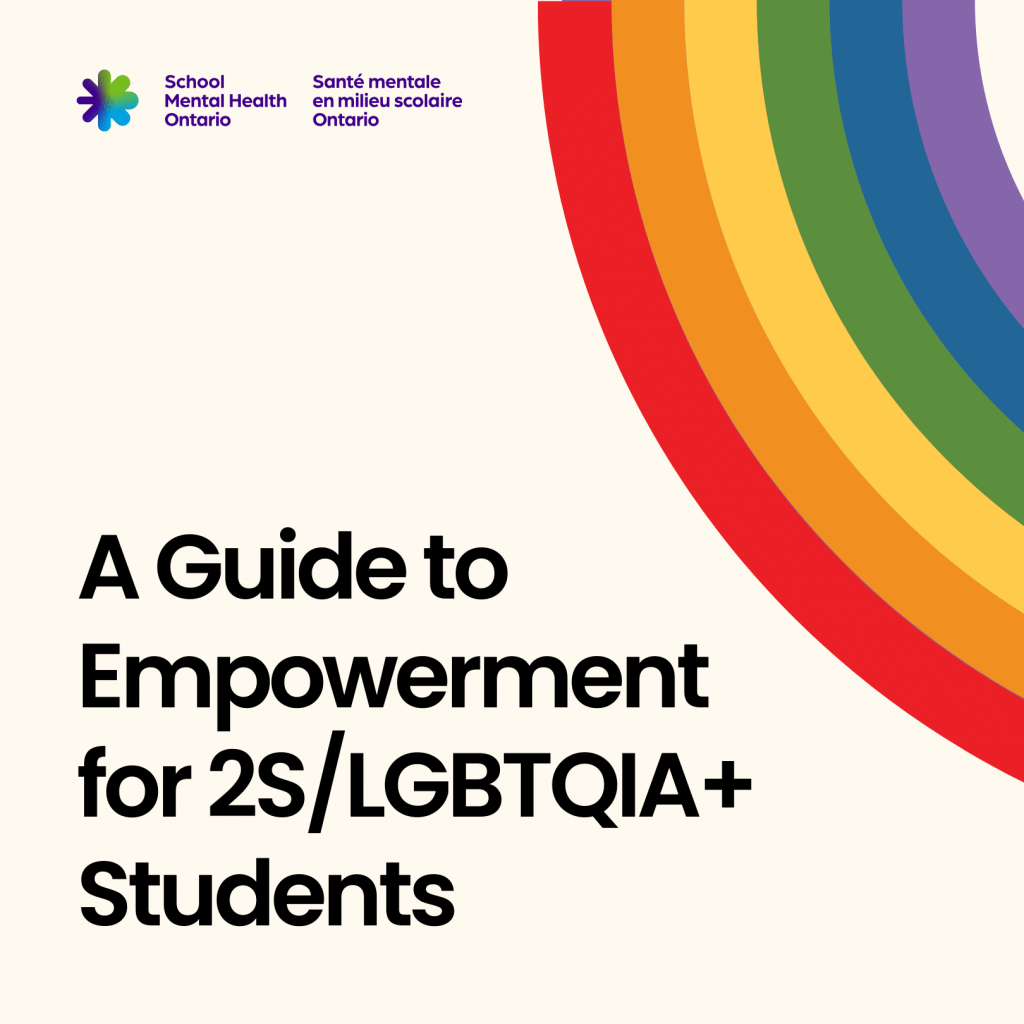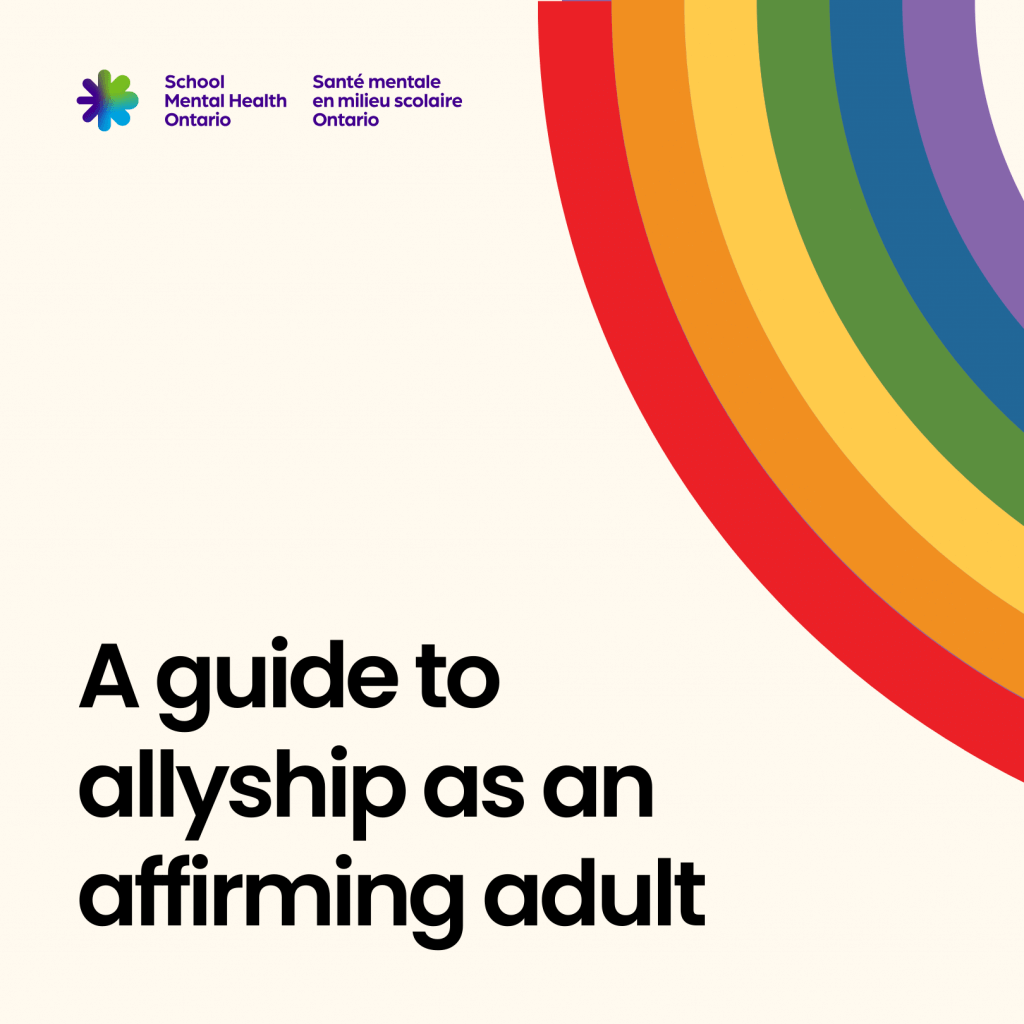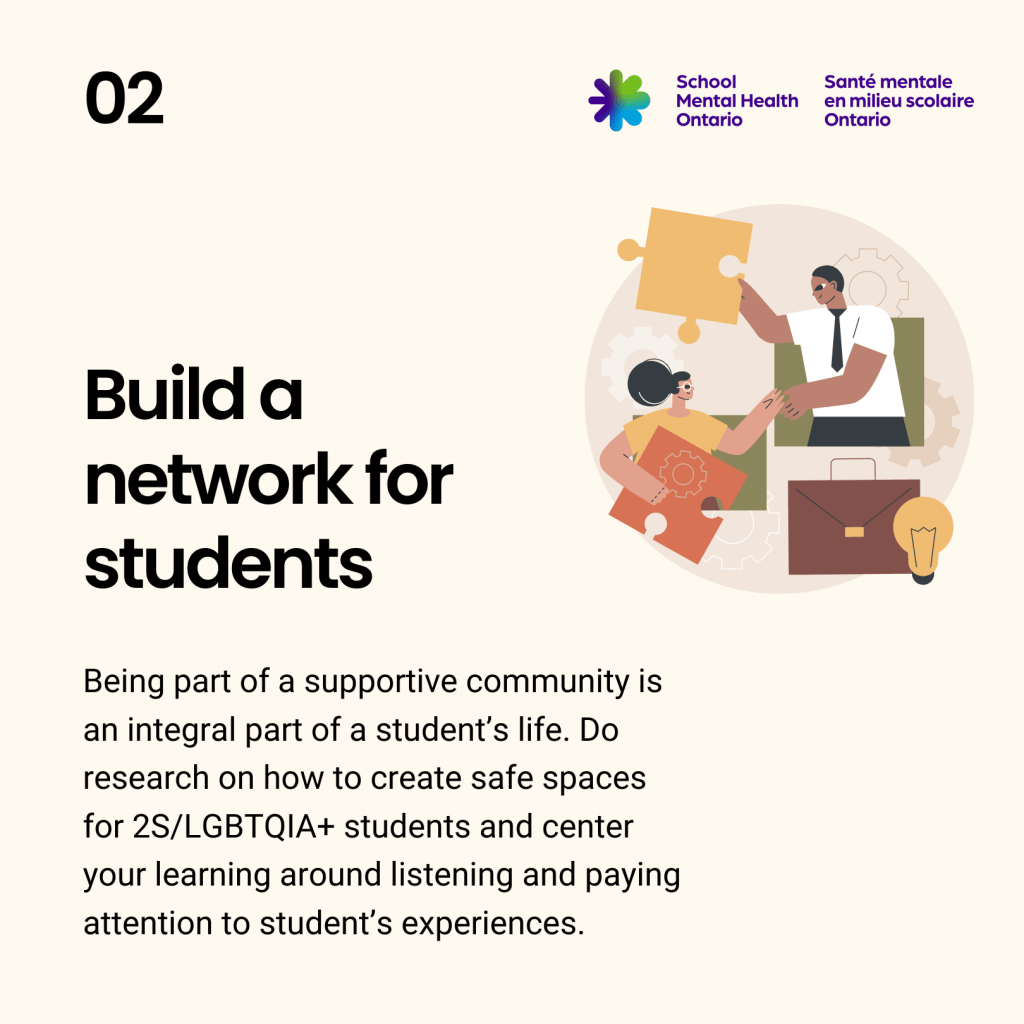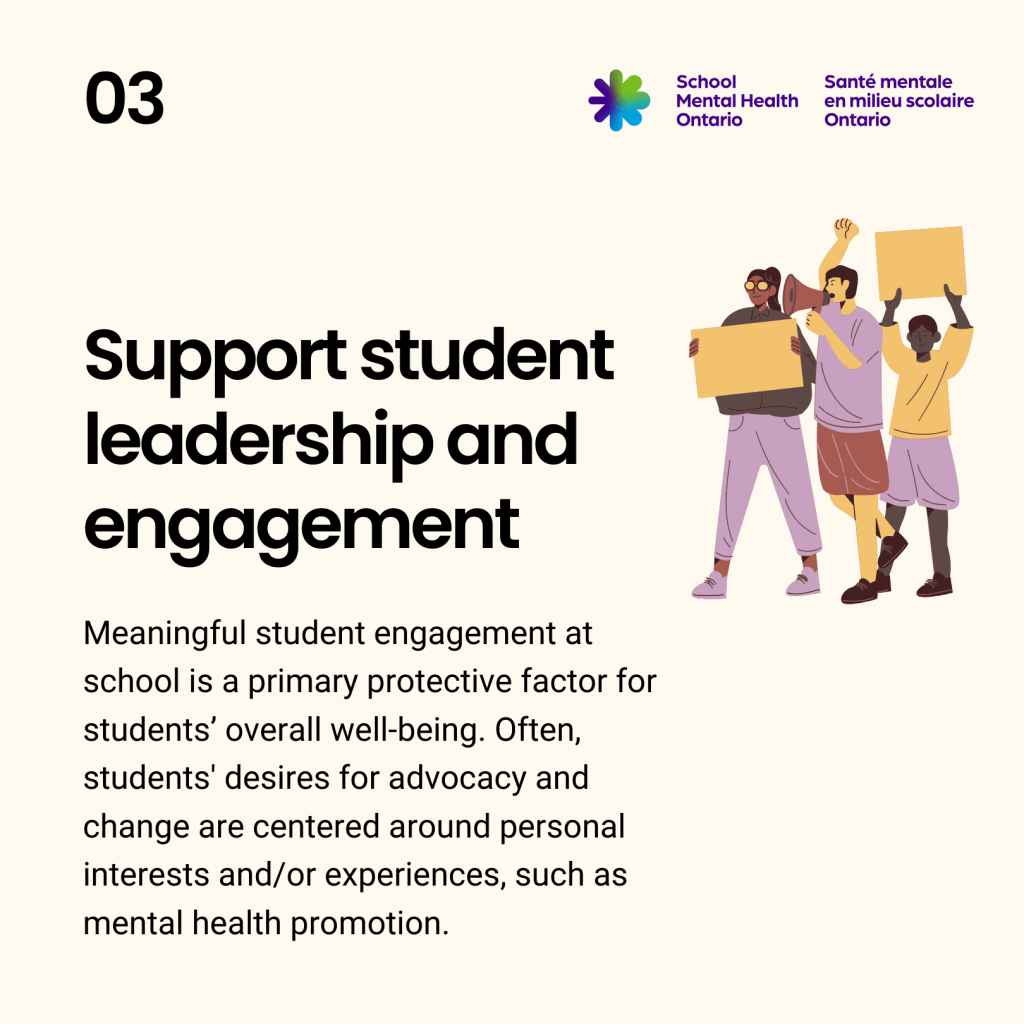2S/LGBTQIA+ Student Mental Health Social Media Bundles
This resource is intended to provide support to students and school staff related to 2S/LGBTQIA+ mental health and well-being.
School Mental Health Ontario has created social media bundles that include various youth-friendly graphics for the classroom, or to share via social media.
These graphics are meant to build understanding and to encourage and provide support for the mental health and well-being of 2S/LGBTQIA+ students in Ontario schools.
Some suggested applications of the social media bundles are to post them on your school board’s social media page at the beginning of the school year or on certain dates (e.g., Pride month) or print them and post them around the school or classroom.
A guide to empowerment for 2S/LGBTQIA+ students
Download the complete bundle – PNG (zip file)
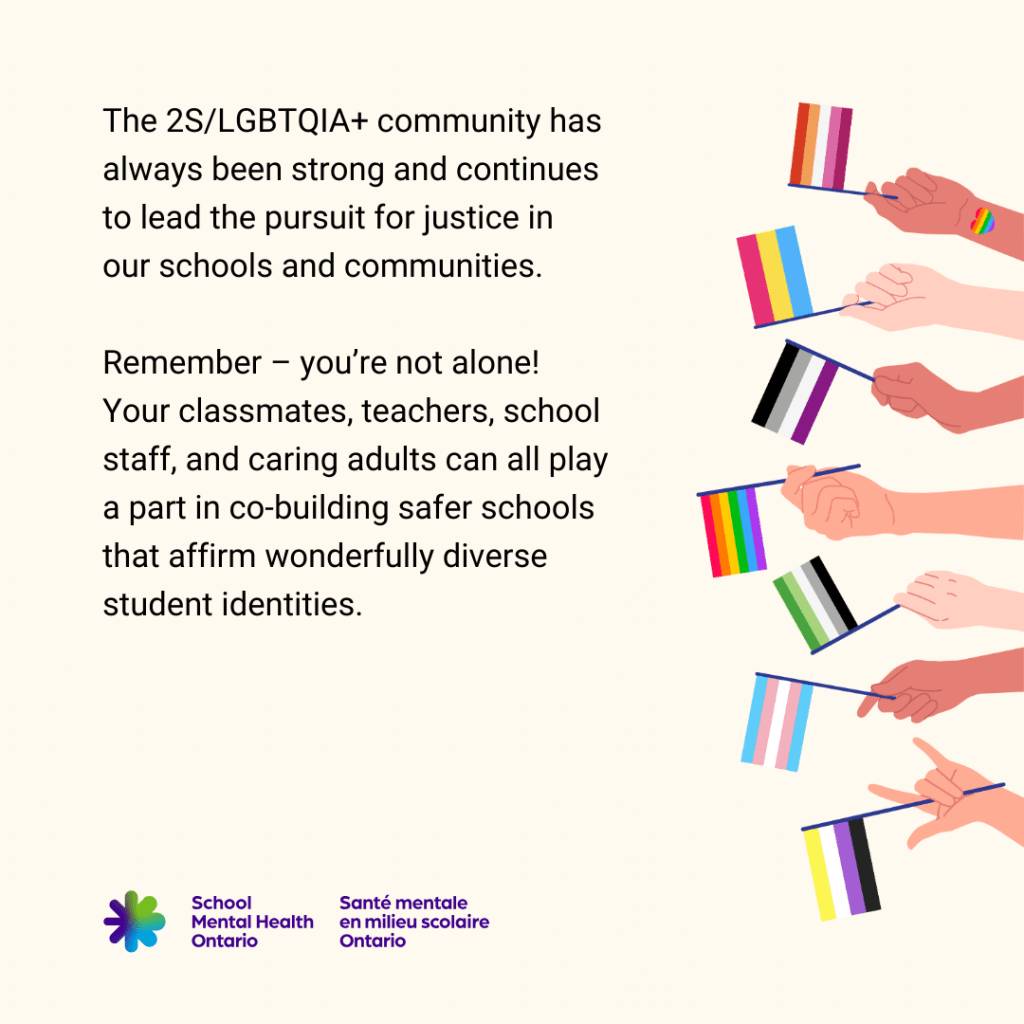
The 2S/LGBTQIA+ community has always been strong and continues to lead the pursuit for justice in our schools and communities.
Remember – you’re not alone! Your classmates, teachers, school staff, and caring adults can all play a part in co-building safer schools that affirm wonderfully diverse identities.
Illustration showing hands of a variety of skin colours waving various flags of the 2S/LGBTQIA+ community.
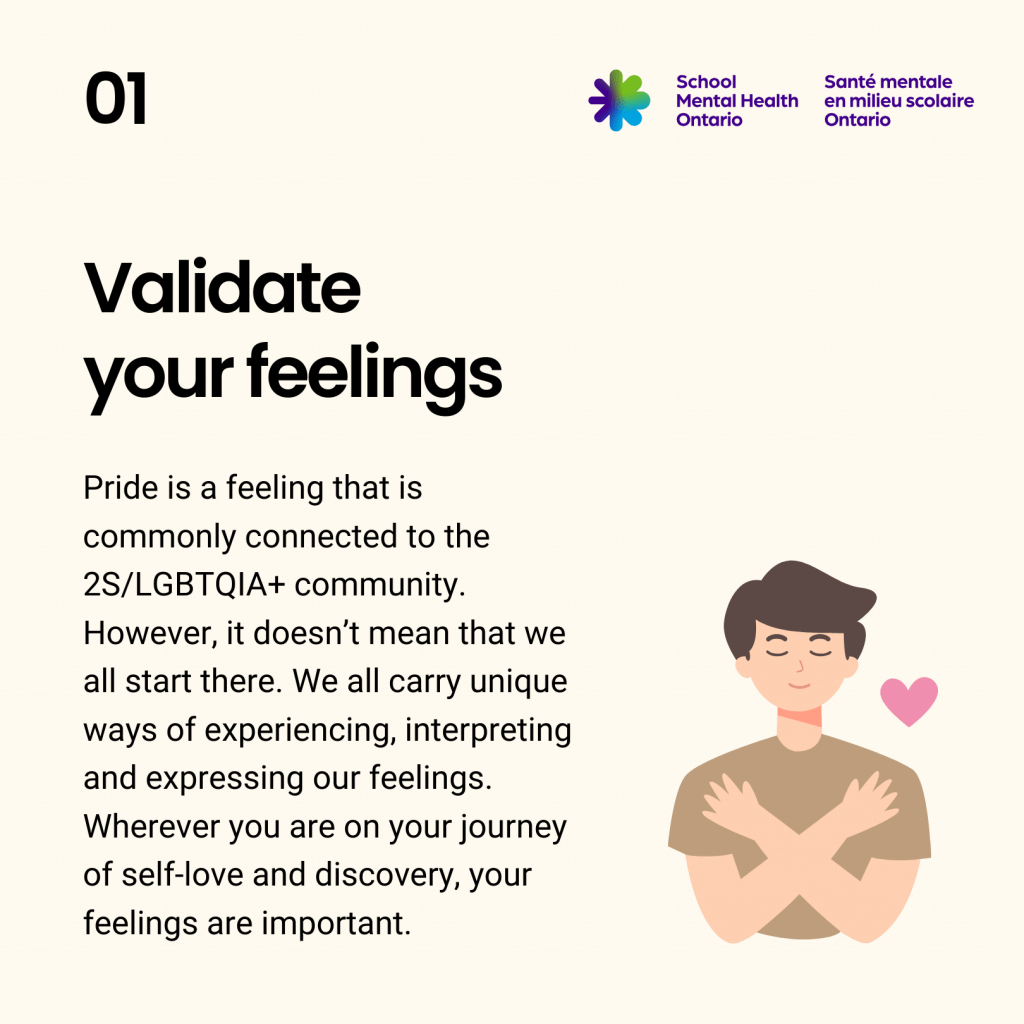
Pride is a feeling that is commonly connected to the 2S/LGBTQIA+ community. However, it doesn’t mean that we all start there. We all carry unique ways of expressing our feelings. Wherever you are on your journey of self-love and discovery, your feelings are important.
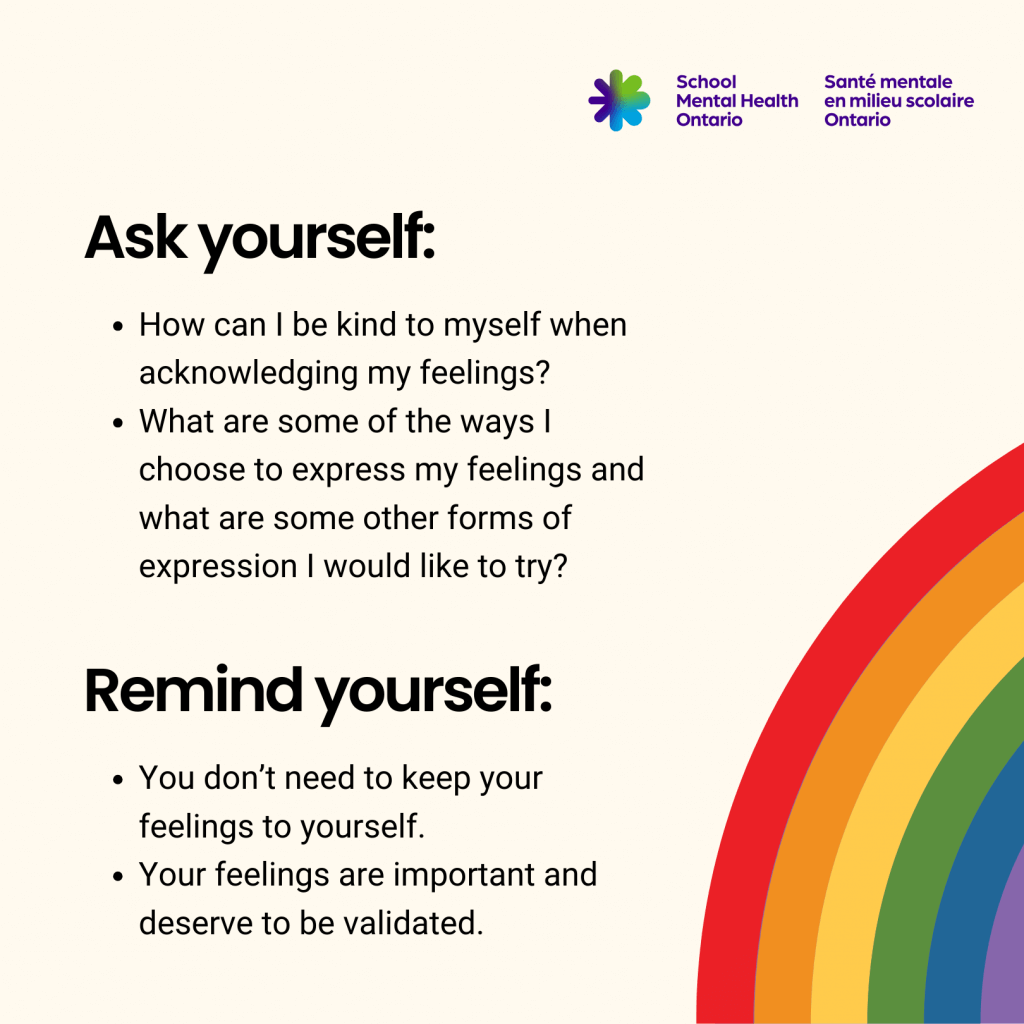
Ask yourself:
- How can I be kind to myself when acknowledging my feelings?
- What are some of the ways I choose to express my feelings and what are some other forms of expression I would like to try?
Remind yourself:
- You don’t have to keep your feelings to yourself.
- Your feelings are important and deserve to be validated.

Having a community that loves and supports you for who you are can be a powerful affirmation. It’s not always easy to find but know there are many who will stand by you and appreciate you for who you are.
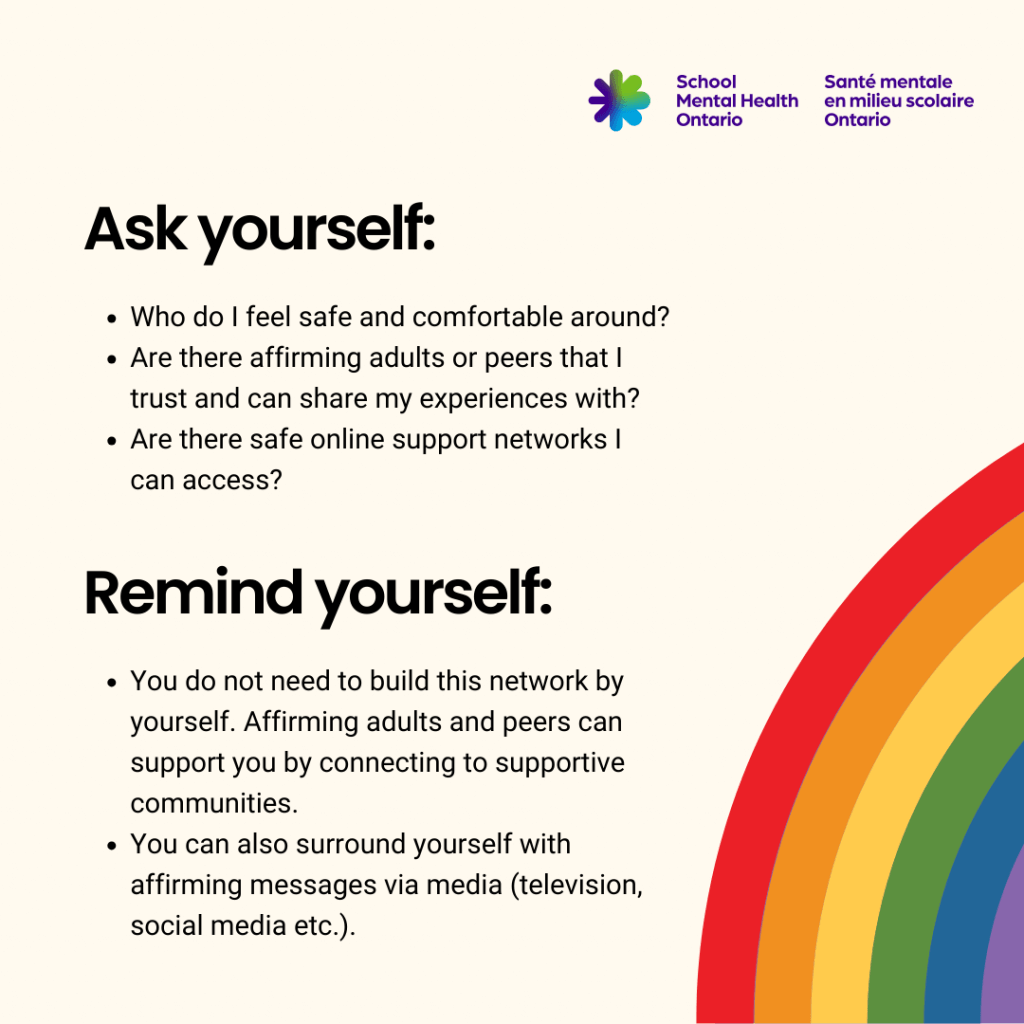
Ask yourself:
- Who do I feel safe and comfortable around?
- Are there affirming adults or peers that I trust and can share my experiences with?
- Are there safe online support networks I can access?
Remind yourself:
- You do not need to build this network by yourself. Affirming adults and peers can support you by connecting to supportive communities.
- You can also surround yourself with affirming messages via media (television, social media etc.).
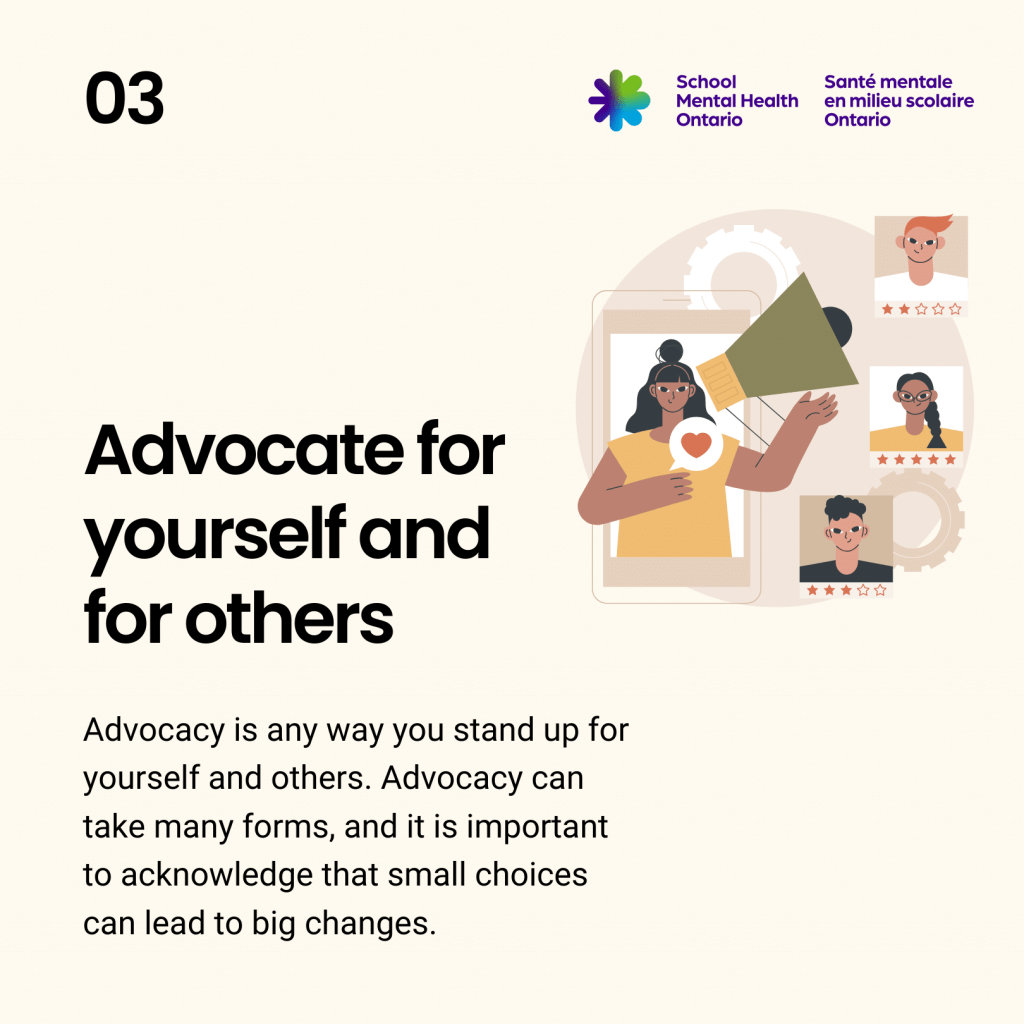
Advocacy is any way you stand up for yourself and others. Advocacy can take many forms, and it is important to acknowledge that small choices can lead to big changes.
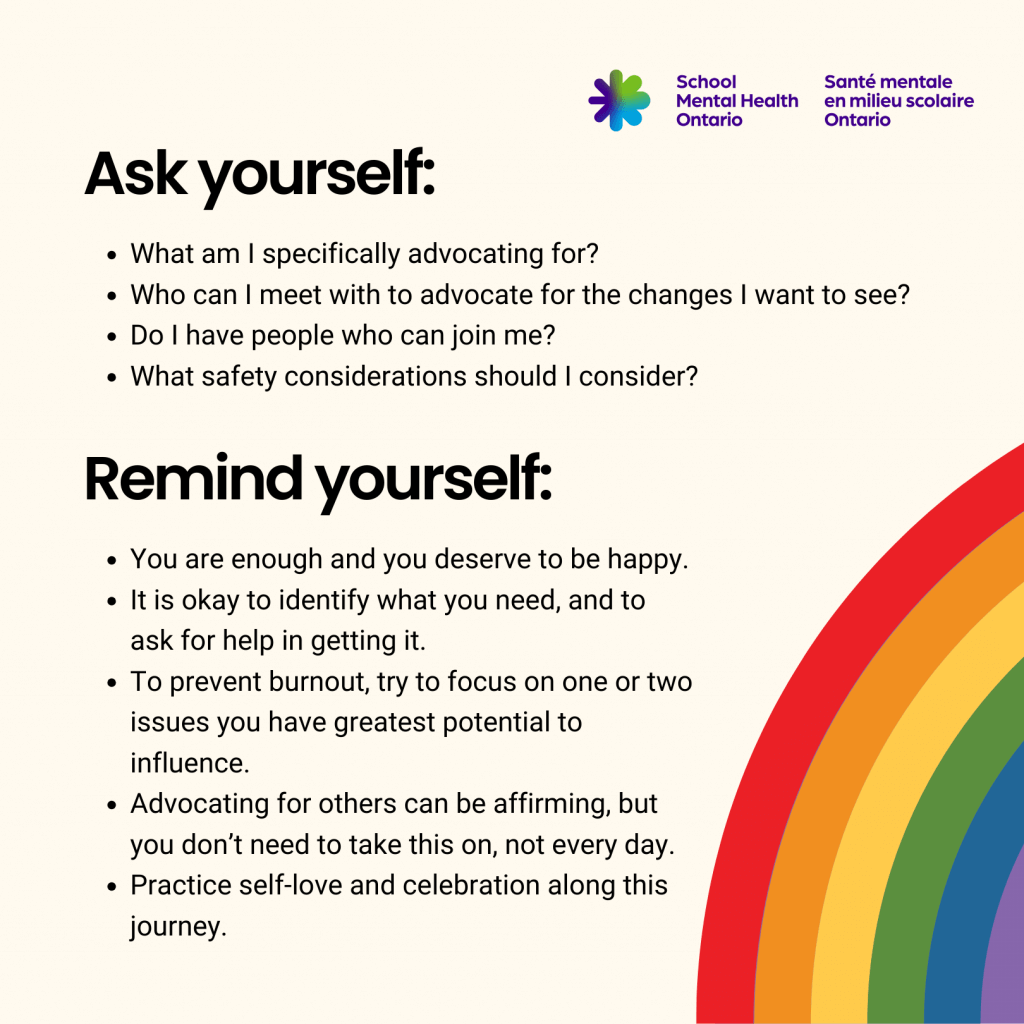
Ask yourself:
- What am I specifically advocating for?
- Who can I meet with to advocate for the changes I want to see?
- Do I have people who can join me?
- What safety considerations should I consider?
Remind yourself:
- You are enough and you deserve to be happy.
- It is okay to identify what you need, and to ask for help in getting it.
- To prevent burnout, try to focus on one or two issues you have greatest potential to influence.
- Advocating for others can be affirming, but you don’t need to take this on, not every day.
- Practice self-love and celebration along this journey.
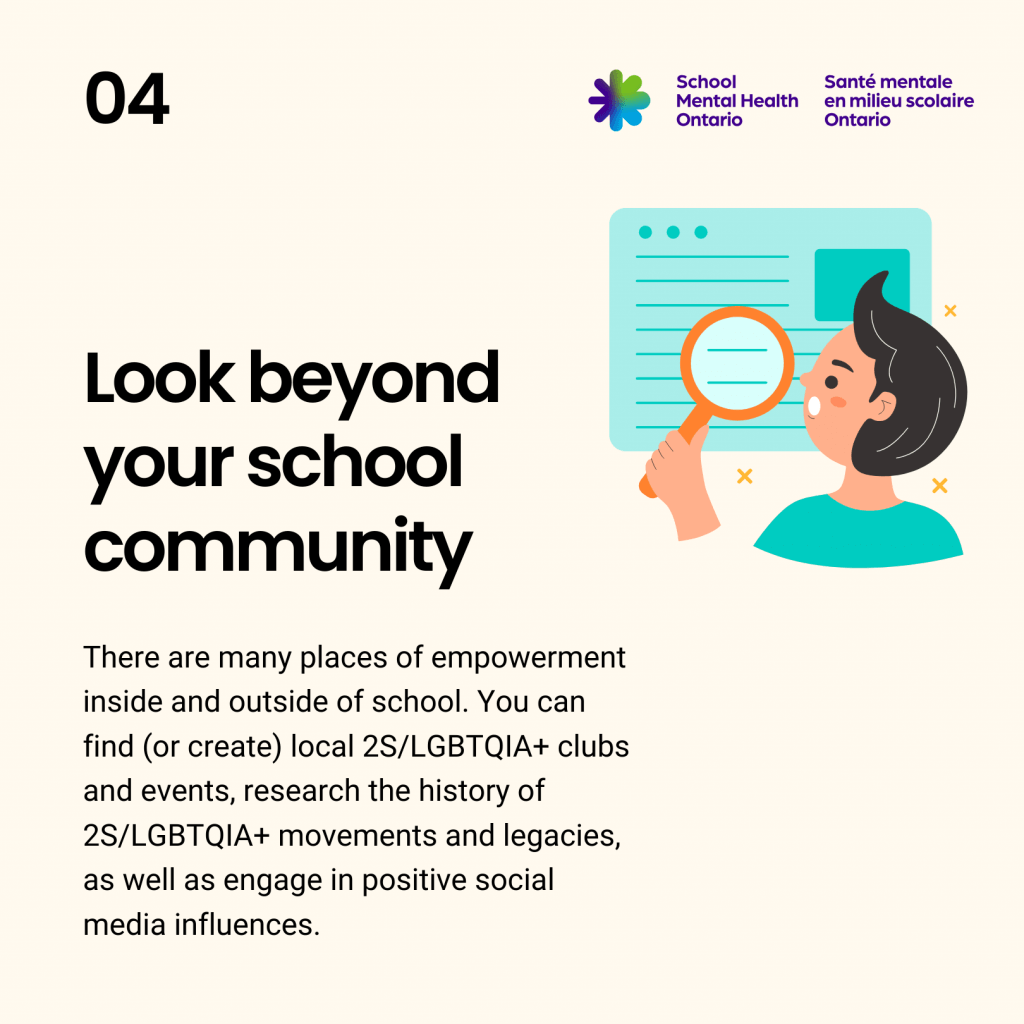
There are many places of empowerment inside and outside of school. You can find (or create) local 2S/LGBTQIA+ clubs and events, research the history of 2S/LGBTQIA+ movements and legacies, as well as engage in positive social media influences.
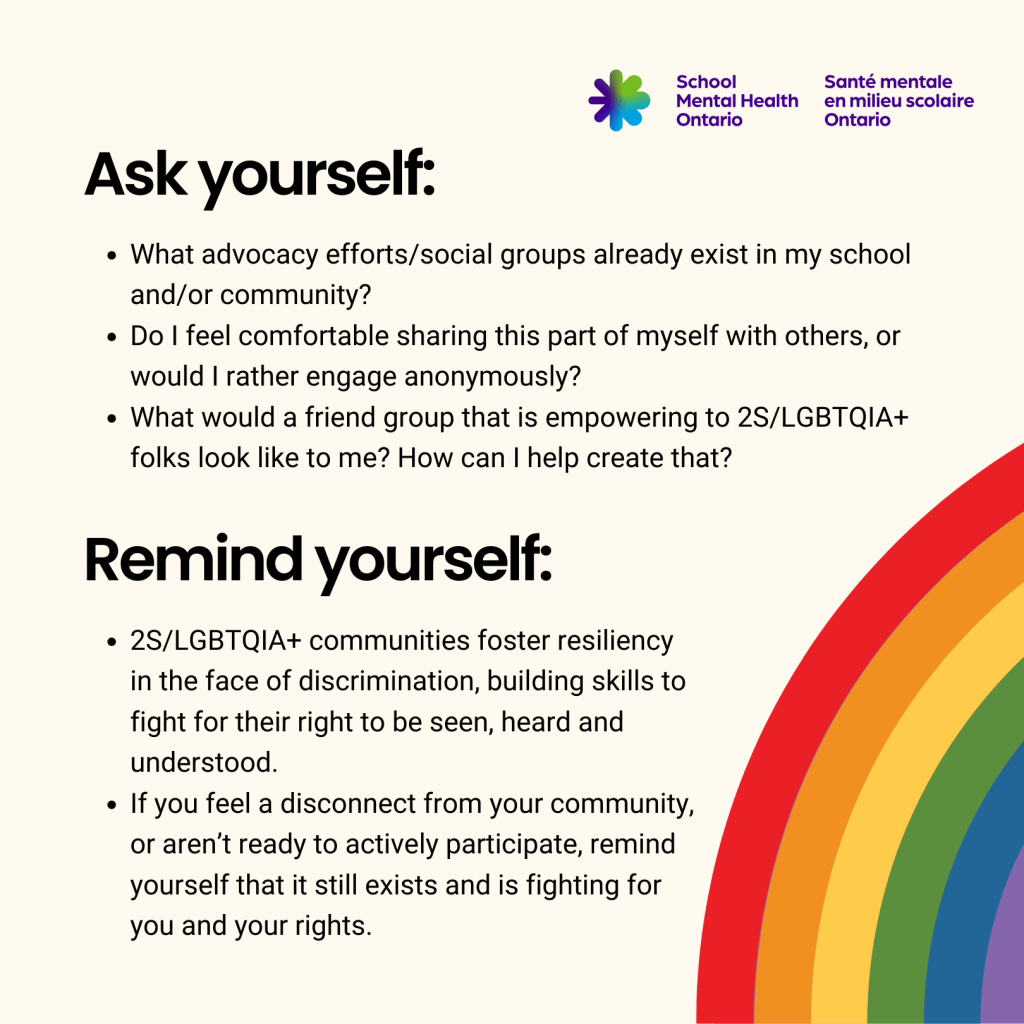
Ask yourself:
- What advocacy efforts/social groups already exist in my school and/or community?
- Do I feel comfortable sharing this part of myself with others, or would I rather engage anonymously?
- What would a friend group that is empowering to 2S/LGBTQIA+ folks look like to me? How can I help create that?
Remind yourself:
- 2S/LGBTQIA+ communities foster resiliency in the face of discrimination, building skills to fight for their right to be seen, heard and understood.
- If you feel a disconnect from your community, or aren’t ready to actively participate, remind yourself that it still exists and is fighting for you and your rights.
A guide to allyship as an affirming adult
Download the complete bundle – PNG (zip file)

Students are constantly evaluating whether their school environment is safe and supportive for them. It is a privilege to be entrusted with a student’s feelings and experiences, and it gives you an important opportunity to provide support. Remind students that their identities deserve respect and that their feelings are valid.
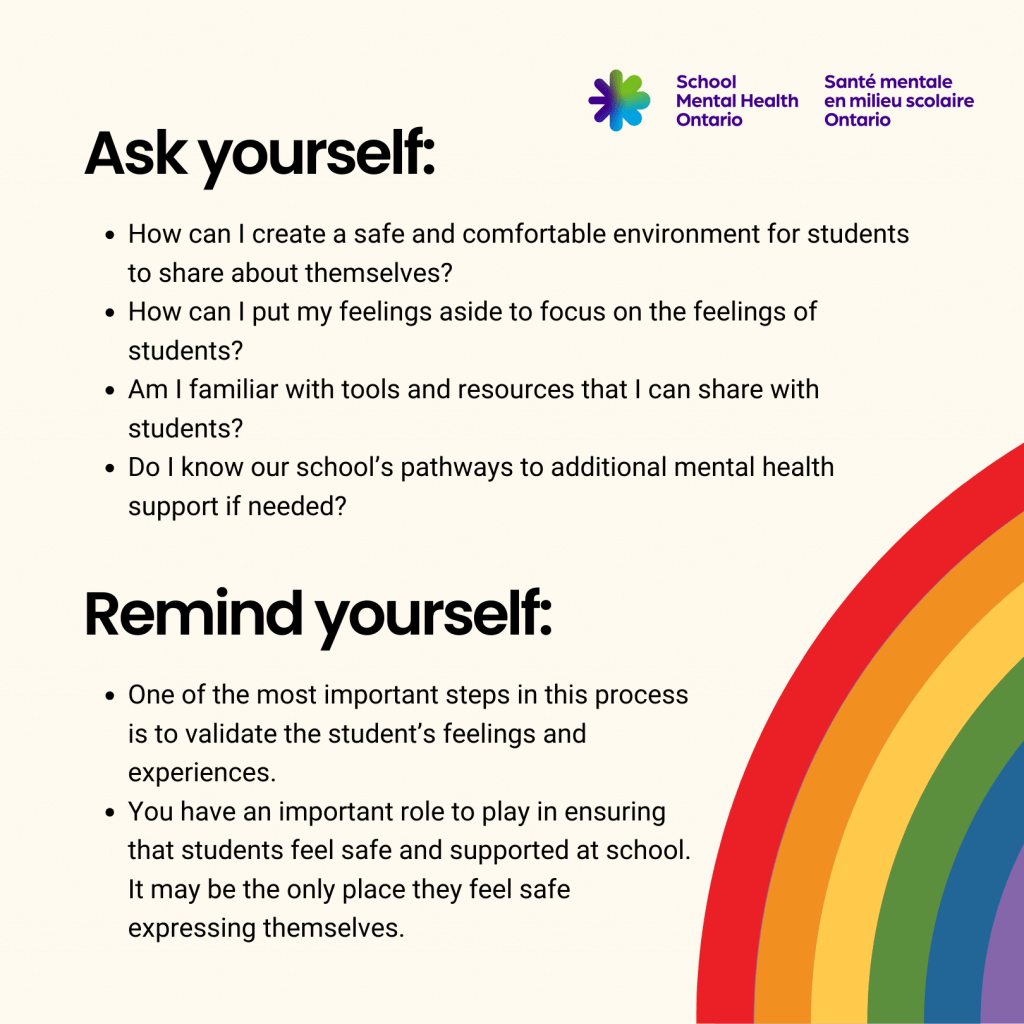
Ask yourself:
- How can I create a safe and comfortable environment for students to share about themselves?
- How can I put my feelings aside to focus on the feelings of students?
- Am I familiar with tools and resources that I can share with students?
- Do I know our school’s pathways to additional mental health support if needed?
Remind yourself:
- One of the most important steps in this process is to validate the student’s feelings and experiences.
- You have an important role to play in ensuring that students feel safe and supported at school. It may be the only place they feel safe expressing themselves.
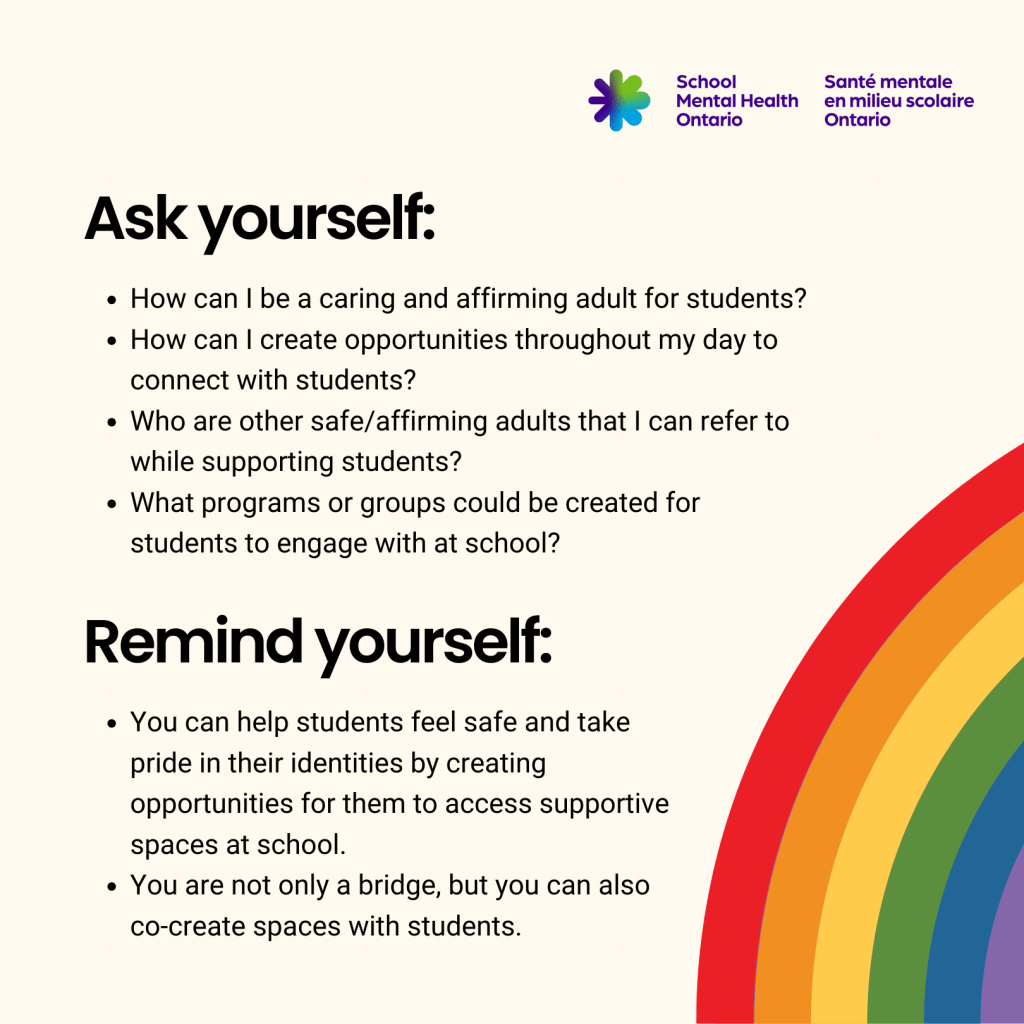
Ask yourself:
- How can I be a caring and affirming adult for students?
- How can I create opportunities throughout my day to connect with students?
- Who are other safe/affirming adults that I can refer to while supporting students?
- What programs or groups could be created for students to engage with at school?
Remind yourself:
- You can help students feel safe and take pride in their identities by creating opportunities for them to access supportive spaces at school.
- You are not only a bridge, but you can also co-create spaces with students.

Ask yourself:
- How can I connect students with opportunities for advocacy?
- How am I ensuring that student perspectives and identities are being centered?
- How can I ensure that students feel as safe and supported as possible during their advocacy efforts?
Remind yourself:
- Practice and model self-care when advocating for students’ rights by fostering everyday mental health practices as well as reconnecting with your own coping strategies.
- Remind yourself that advocacy work is collective work: we can rely on others in our school board or community for support during the process.

In addition to having a safe community at school, it is also important for students to be part of safe communities outside of school. This supports students in widening their network, activities and interests and supports their overall well-being. Familiarize yourself with local resources, clubs, and 2S/LGBTQIA+ events to share with students and encourage participation.
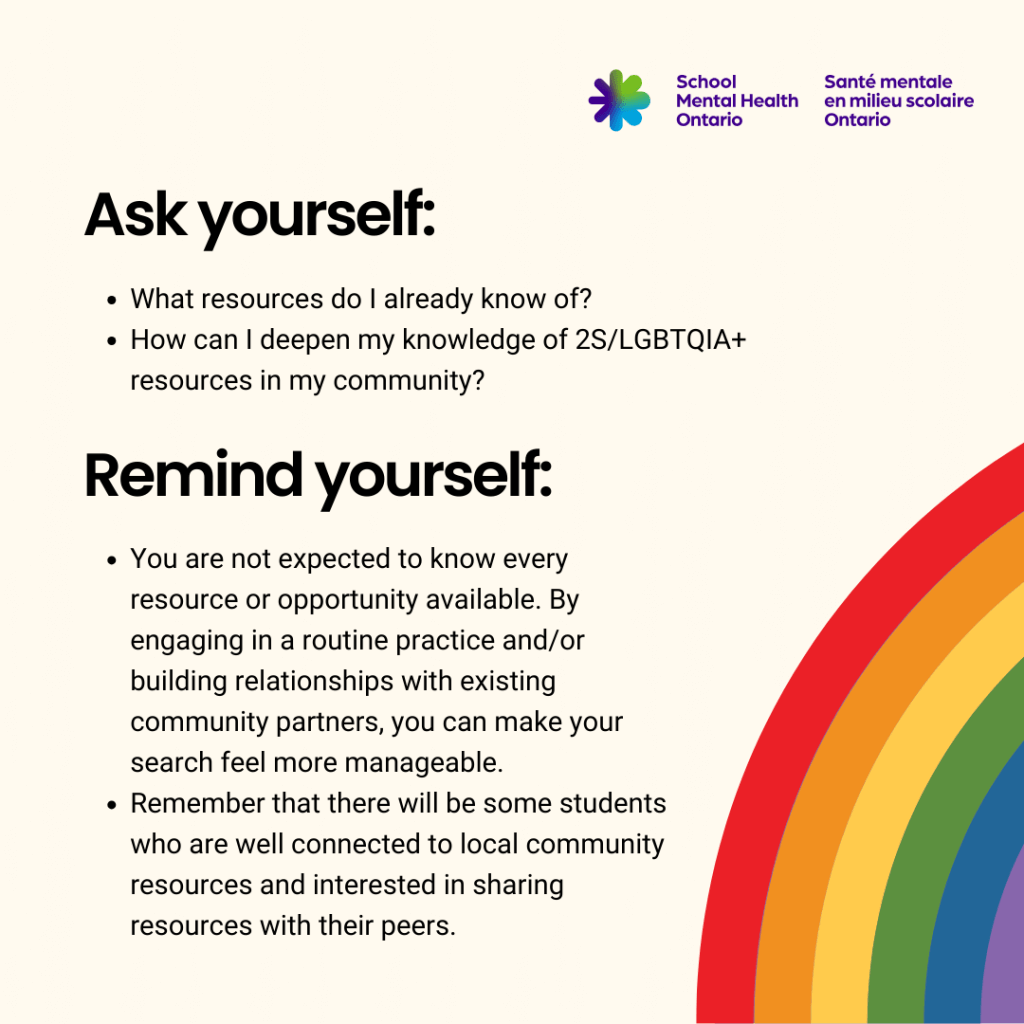
Ask yourself:
- What resources do I already know of?
- How can I deepen my knowledge of 2S/LGBTQIA+ resources in my community?
Remind yourself:
- You are not expected to know every resource or opportunity available. By engaging in a routine practice and/or building relationships with existing community partners, you can make your search feel more manageable.
- Remember that there will be some students who are well connected to local community resources and interested in sharing resources with their peers.
Egale, Four Step Guide to Empowerment for 2S/LGBTQIA+ Students (2023). Retrieved from: https://egale.ca/wp-content/uploads/2023/09/Back-To-School_4-Step-Resource-for-Students-3.0.pdf

